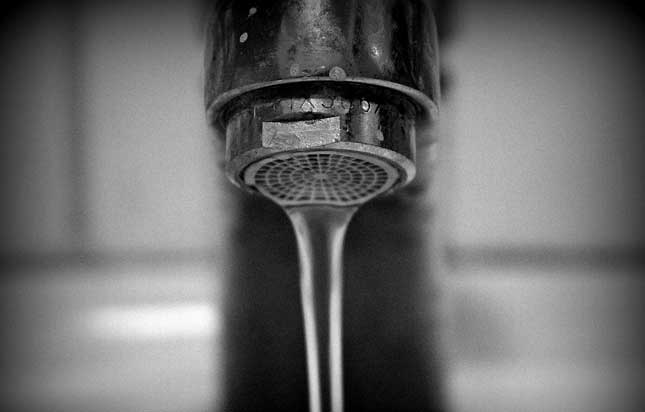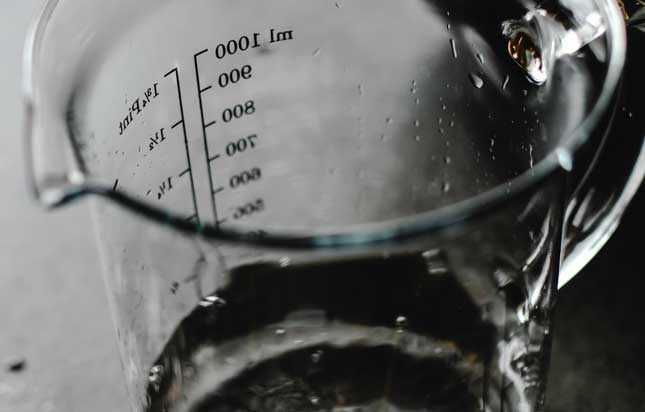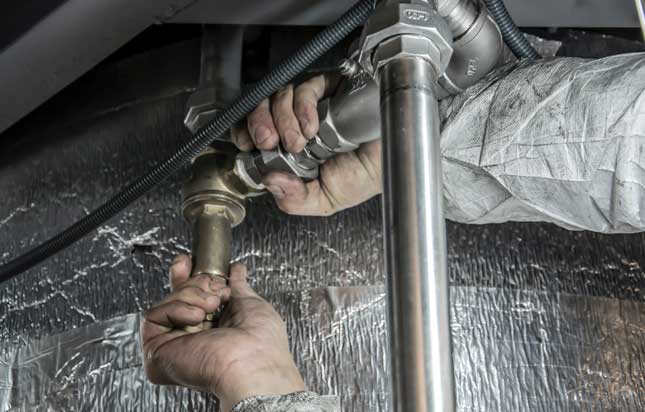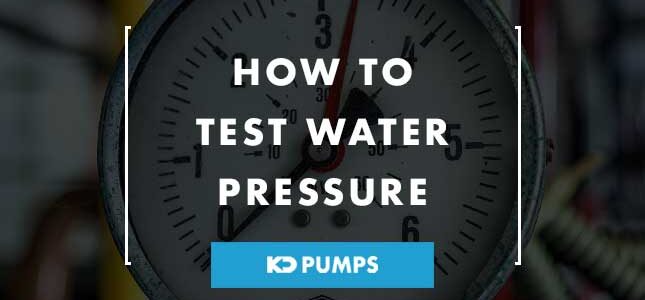How to Test Water Pressure
Normal water pressure is an important element of any plumbing system, whether domestic or commercial.
Should the water pressure be too high, damage could result.
If it’s too low, it can prove to be unusable in many day-to-day circumstances.
For this reason, it’s a good idea to understand what achieving normal water pressure entails, how to go about testing it, as well as key aspects relating to increasing or reducing it.
Article Chapters
What is Water Pressure?

Image source: Kati
Water pressure is the term used to describe how quickly water flows through the pipes, until it makes its way to a tap or other valved outlet.
Water pressure is measured in psi, which is bar and pounds per square inch.
What’s the Correct Water Pressure?
The most direct answer to this question is that the water pressure should flow at more than 15 litres of water per minute.
In fact, if it’s below, one can say that it cannot be considered an acceptable level.
Anything below 10 litres per minute is very poor.
Water at that rate will run at a frustratingly slow rate, making it very inconvenient to run a bath or take a decent shower properly, for example.
On the flipside of the coin, should the water pressure be over 15 litres per minute, one will need to take into account whether it’s too high.
As a general rule, ideal water pressure in one’s home should not be over 60psi.
A pressure gauge will be needed to measure water pressure in this case.
How to Test Your Water Pressure

Image source: Eva Bronzini
Testing Low Water Pressure
To test low water pressure you will need the following things:
- A measuring jug ideally of 1 litre capacity
- A timer
- A calculator
And here is how to carry out the test:
- Place the measuring jug under the tap.
- Then, turn the tap on full.
- Time how long it will take for the jug to fill up.
- If it takes more than 6 seconds to fill it up, then the water pressure is low.
In case you do not have a 1 litre measuring jug, you will need to do some math accordingly.
Measure the amount of water you fill in the jug during a 6 second interval.
Then, multiply this reading by 10 to get the result for a 60 second time interval.
By doing so, you get the approximate amount of water you would have filled up in one minute.
Testing High Water Pressure
You will need the same items used above, as well as a water pressure gauge.
This can be purchased from most hardware stores.
- Make sure that all the taps both inside and outside your house have been turned off.
- Secure the pressure gauge to the outside tap.
- Turn the tap on full.
- Review the reading on the water pressure gauge. If you get a reading in the range of 40 to 60 psi, the water pressure is at an ideal level. However, should be over 60 psi, it’s important to consult a plumber.
Causes of Low Water Pressure
Low water pressure is bound to be frustrating and inconvenient.
Hence, you will need to find the root cause of low water pressure to try to resolve it accordingly.
The following are some causes of low water pressure which you may wish to look into:
Demand
This is one of the most common causes.
Consider everyone having a shower in the morning before leaving for work or school.
Typically this will be round about the same time, resulting in high demand, which in turn reduces the general water pressure that is available in your area.
Narrow Pipes
Another common reason for low water pressure is due to narrow pipes.
Indeed, older properties tend to have narrower pipes than properties that were built more recently.
In some cases, they may be half the diameter.
Blocked Pipes
Pipes can get blocked due to limescale, rust, dirt and other waste.
This will result in low water pressure.
Pipes could also be frozen when temperatures get very low.
This will also have a negative impact on the water pressure.
Clogged Appliances
You may wish to check whether your taps and shower heads are clogged.
Over time limescale build-up can result, and this will reduce the amount of water that manages to pass through.
It’s a good idea to clean these every few months using a solution of white vinegar and baking soda.
If your shower head doesn’t have a filter, you may wish to replace it with one that does as this will help to protect it from debris from the pipework.
Head of Water
The head of water is the term used to describe the height that there is between the shower head and the water level in the water tank.
The higher the head of water, the greater the water pressure will be.
In cases when there’s less than one metre head of water, the water pressure level will be quite poor.
Closed Stopcock or Valve
Check whether the stopcock or shut-off valve is either closed or obstructed.
If this is the case, the water pressure is bound to be very low.
So make sure that it’s fully open, and that there is no debris that might be causing an obstruction.
This tends to be a common issue in properties which have been bought recently or had building works done.
How to Adjust Water Pressure

Image credit: Anıl Karakaya
The following are some ways which could help you to increase the water pressure at home.
Descale Taps & Shower Heads
Descaling shower heads and taps is very important.
Unfortunately, limescale build-up is very common.
So if regular descaling is not carried out, the water pressure will suffer.
It’s quite simple to clean tap outlets and shower heads, and ideally this should be done every few months.
It’s also important to check whether the shower hose is in good condition as if it is kinked or worn, it could also impact on water pressure levels.
Replace Taps & Shower Heads
If the taps and shower heads look clean and free from limescale, but the water pressure is still low, then you may wish to consider replacing them.
This is especially important in case of showers, as there could be clogs in the interior, the hose or the handset.
Fit a Pressurisation Unit
You may also consider fitting a pressurisation unit.
Such a unit has the ability of maintaining water pressure levels in water systems at a certain level.
They also help in water savings.
Fit a Shower Pump
This is an electric pump which could improve your water pressure significantly.
Such a pump will be fitted to the existing system.
Every time the shower is turned on, the pump will be activated.
Such an option is especially ideal in cases where the property is slightly older and thus there are narrow pipes, as well as when the system is gravity-fed.
Conclusion
If you have been upset with the slow trickles from your taps and showers, it’s important to learn how to test and improve the water pressure.
A stronger flow can often be achieved if you try out one or more of the suggestions above.
But in case you still did not get the desired water pressure, it’s best to consult a plumber for expert advice and assistance.


Comments are closed.